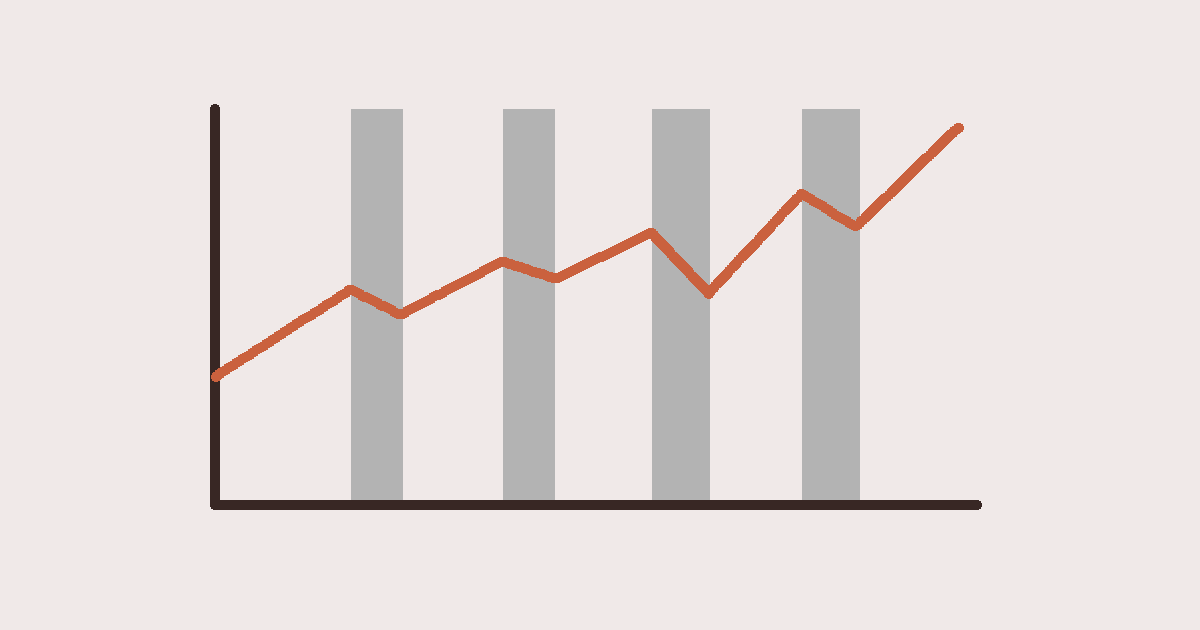The real estate industry, apartments included, has been caught in a cycle of deep lows and massive highs for decades. It has weathered major catastrophes in 1980, 1990, 2001, 2009 and now in 2020 it must rebound again. The renters who enter the housing market this month will do so with a new set of questions for their prospective landlords. Renters who have weathered previous storms found their priorities shift in similar ways. Today we'll look at each of the four prior crises and how they shaped the qualities that renters looked for in a good landlord, and give some consideration as to how the COVID crisis will shape the job in turn.
1981: Energy, Habitability, Vacancy, Recession
There was a pretty large recession in late 1979 lasting until early 1980. The real estate market suffered although it rebounded relatively quickly. Blame was laid largely at the feet of the Federal Reserve, which had made efforts to counteract the late 1970s energy crisis and massive inflation and went a bit too far. People couldn't find jobs, couldn't get car loans, couldn't get home loans. Apartment vacancies were at an all time low, forcing people to double up with roomates. (All of those 1980s sitcoms featuring strangers living together were not all that farfetched.)
But the tenants of the 1980s would also have been aware of the huge tenants rights movements occurring all across the country. In Chicago the campaign for the development of the CRLTO was just beginning. The Evanston RLTO was already existent. Landlords nationwide were having to guarantee to tenants that their apartments were suitable for occupancy and tenants were aware that their rights to privacy, safety and quiet enjoyment were not only human rights, but legally protected civil rights.
They would have been concerned about energy efficiency. They would have wanted a landlord that provided a modern lease that spoke of lead based paint, habitability, tenant's rights, and legal fees. They would have wanted someone who kept to themselves and didn't ask too many questions about who was living with them. Faced with news of rising tensions with the Soviet Union, they would have been fine with a profitable corporation that kept to themselves as opposed to a nosy building superintendent.
1991: Backlash, Grassroots, Stability, Radon, Recession (again)
We recovered pretty quickly from the recession of the early 80s, but in the 90s we would not be so lucky. The 1990s recession was basically fallout from the knee-jerk reaction to the previous one. The Fed had restricted lending intensively in 1980 but had never loosened their grip. Real estate had bubbled towards the end of the 1980s, but come 1990 there were too many buildings and not enough people to live in them. Another fuel price crises was the final blow that sent the economy into an 8 month tailspin. Vacancy rates soared. Commercial real estate including the apartment market really suffered this time around.
The tenants of the 1990s were finished with the Cold War and the big business mentality of the 1980s. The young people entering the rental market were the children of the flower power hippies and the Vietnam vets. But also entering the market were empty nesters who had reaped the benefits of late 1980s success and could rely on healthcare advances to expect another several decades of active life after retirement.
After watching major corporate landlords struggle in the wake of the 1990 recession, the tenants of the early 90s would sought out smaller landlords, smaller buildings and simple aesthetics. They wanted a landlord that they could get to know personally. They would also have wanted to see some concern for all the apartment health hazards that had made the news in recent years. While lead paint was already a known hazard in the early 80s, by the early 90s there was also asbestos and radon to worry about. Instead of the big apartment complexes that had sprung up in the suburbs in the 1980s, the renter of the 1990s would jump at a smaller building in the city.
2001: Security, Family, Screening, Scope
Now we come to the first crisis that I experienced personally, September 11. In retrospect the economic effects we will see from COVID-19 are probably very similar to the ones that followed the attacks in NYC and DC. Tourism, entertainment, and travel tanked. Medicine, pharmaceuticals and defense did pretty well. We became afraid of strangers; back then it was Arabs, now it's apparently Asians. But most importantly for this article, nobody wanted to move. Everyone just wanted to hunker down in place and cook comfort food for a good couple of years afterwards.
The tenant of 2001 wanted a landlord that focused on security. Gates, cameras, locks, front desk staff all became big draws. They wanted a landlord that screened other tenants heavily, and they accepted heavy screening of their own applications in due course. City landlords struggled during this era far more than suburban landlords as renters fled from potential target locations in favor of less well-known areas. Renters who had learned to cook in the nesting phase after the tragedy sought out larger kitchens. Renters who spent that same nesting phase watching the newly minted HGTV also wanted larger kitchens, but also started paying attention to crown moldings and hardwood floors.
The ideal landlord of the early 2000s had a large portfolio or a smaller number of very big buildings. They were connected to the internet, they operated out of a central location instead of keeping supers at their buildings, and they displayed a strong affiliation with the legal industry. They ousted sex offenders from their buildings, they participated in community policing, and they definitely didn't have any brown-skinned people on their maintenance staff. But most importantly, they were familiar. They were friends of the family, friends from school, or at the very least, well-established and respected names with a long history of success.
2011: Solvency, Flexibility, Community, Yet Another Recession
The Great Recession. That's what they now call the era from 2006-2008 when the housing bubble burst and everyone went into foreclosure. Condo developments shut down. Nobody could get financing to buy anything in the real estate market. Homeowners who were forced into short sales or foreclosure wound up back in the rental market. The concept of the home address, which for years had been something consistent and reliable for years on end, suddenly became a very temporary thing.
The renters of 2011 wanted a landlord that was financially solvent and with the rise of open government data they now had the means to check online. Or they wanted a high end condominium knowing full well that the original owners couldn't hold onto it and were letting it rent for bargain basement prices. Knowing full well that their jobs could only last a few months, they wanted landlord who offered flexible leases and cheap ways to break out of a contract when the money stopped coming in. Convenience was also a major factor. The renters of this generation were the ones who didn't like eating cereal because it meant they had to wash a bowl afterwards. They looked for community amenities on site such as health clubs, business centers, rooftop decks and regular social events for residents. The more they could do without leaving the building, the better. They checked Yelp reviews to see which landlords provided the best customer service. And they did expect to be treated as valued customers rather than as passive investments.
But the intensive screening that they wanted in the early 2000s became a problem in 2011 when everyone's credit had been tarnished by years of problems with student loans, mortgages and other interest-bearing debts. They screened their landlords for financial solvency, but when it came to their own ability to pay their debts they hoped against hope that the landlords would turn a blind eye.
2021: Generosity, Hygiene, Humanity
So that brings us to today. Or tomorrow, really, because we can't be sure at the dawn of "Phase 3" what things will look like for the renters of "Phase 5" and beyond. What we can see from this run through the history of the market's response to crises is that the crises themselves only partially inform the demands of the consumers. Trends that were underway before the turning points influence the choices of the next generation of renters in equal measure.
We know that we're seeing demands across the country for rent control. We're seeing demands for equal treatment of people with criminal records and, recently, equal treatment regardless of career choice. Unfortunately no public records are being assembled concerning the payment arrangements and concessions that landlords are currently making for tenants that are out of work due to COVID-19 shutdowns. The pendulum for gauging a landlord's performance will have to swing from open data kept by the government back to word of mouth.
Hygiene will certainly be a point of concern for at least the next couple of years. Landlords that emphasize their custodial staff instead of their maintenance team will probably prosper. The recent interest in laminate floors, wood surfaces and brick will probably give way to a more sterile aesthetic - tile and metal. Mud rooms, foyers and similar "airlock" transitional spaces from outside to inside will be in high demand. But all of these easy-to-clean finishes will matter little if nobody is actually cleaning them.
But I think the most important word that the landlord of 2021 needs to bear in mind is "charity." The tenant of 2020 sees themself as a charity case. Possibly not in those exact terms, but in this era there is a tendency to see yourself as broken in some way or another. Landlords have for years argued that they won't allow certain types of individuals to live in their property because they will scare off other clients. Or they have argued that they won't accept tenants that are an obvious financial risk, citing the costs and time involved in evicting them. To the tenant of 2021 neither of these excuses are viable anymore. Anyone could become a financial risk at any time. Anyone who's frightened of living with "those people" is a NIMBY. It's a whole different attitude. Of course there will be extremely wealthy renters who still seek out the high end communities. But the rise of arrangements like co-living and long-term hostelry tells me that the 2021 renter is not looking for an apartment, they're looking for a shelter.
Those landlords serving a more mature market will have their own issues to deal with. The post-retirement renter generation now faces an increased need for assistance in their homes. They are now used to seeing themselves as "high risk" people. For this portion of the market the need for increased hygiene will be paramount, but so also will be the need for interpersonal concern and customization. It is no longer a long list of wants and very few needs. It is instead a very long list of needs.
The market has weathered events of this nature before, and regularly at that. Every time we emerge from crisis a new approach is needed in order for vendors across all industries to appeal to the changed viewpoints of consumers that have been touched by it. We have recovered before, sometimes with major shifts and sometimes with minor ones. Almost every time the consumer preferences do a complete 180 pivot. For the landlords who are looking at the predictions above and wincing, maybe it's time to get out of the market. For the tenants who are entering the market this year, take a look at the learned behaviors within the industry that have accrued over the past 10 years and understand that a change in attitudes takes time and persistence.
RentConfident is a Chicago startup that provides renters with the in-depth information they need to choose safe apartments. Help us reach more renters! Like, Share and Retweet us!


